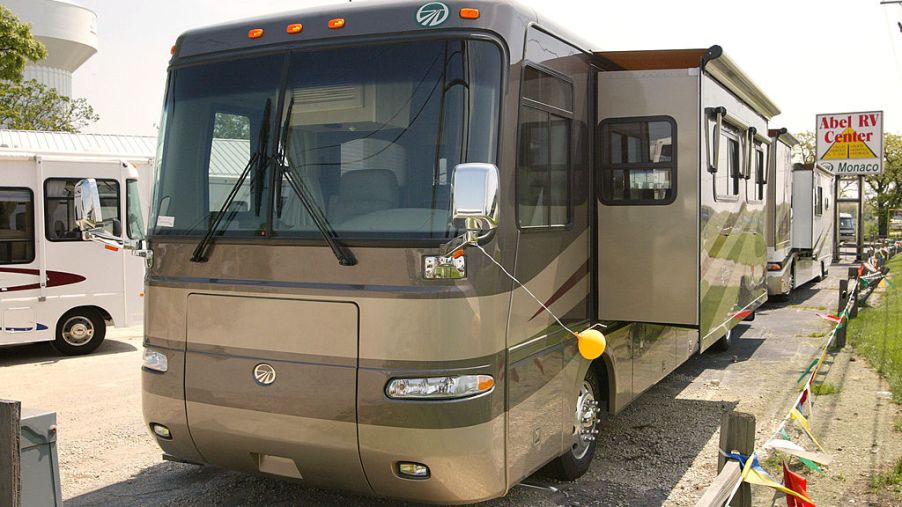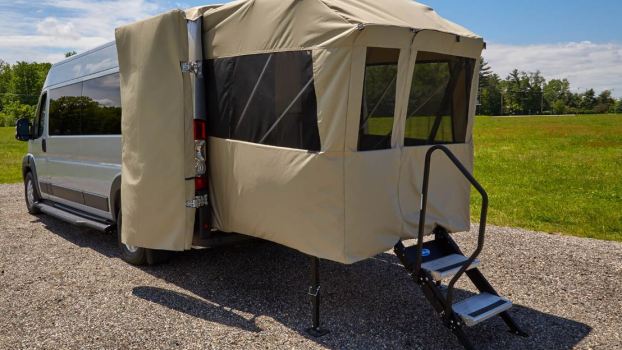
Camper vs. RV: What Is the Difference Between Camper Classes?
There’s nothing quite like hitting the road in an RV or taking in nature through the windows of a camper. But what’s the difference between an RV and a camper? And what are the different types? With so many options available in the recreational vehicle world, it can be hard to know the difference in types and classes of campers. To help you discover the best type of camper for your adventure, check out our guide to RV and camper types below.
Updated: 7/25
Camper vs. RV: What’s the difference?
“RV” stands for “recreational vehicle,” but there are many terms and words used to describe an RV. A recreational vehicle can be towed behind your vehicle, driven by itself, or even built into the bed of your truck.
According to Camper Report, there are many names given to the various types of RVs, but they are still all RVs. RVs can be described and categorized as campers, camper trailers, pop-up campers, motorhomes, and more.
Though a recreational vehicle can be all of these things, it is common for people to associate “campers” with recreational vehicles that are towed behind you and “RVs” as motorized vehicles that can are driven by you. No matter what you choose to call them, RV or camper, here’s a look at all the different types.
What is a Pop-up camper/trailer
A pop-up camper or trailer is one of the most compact and lightweight recreational vehicles. It can also be referred to as a folding trailer. These can be anywhere between 8-16 feet.
Depending on their length and weight, pop-ups can be towed by a variety of vehicles. These types of campers fold into themselves, allowing for easy storage and towing. It is often the most affordable of tow-behind campers and also offers minimal amenities. Some pop-ups, however, can house kitchens, bathrooms, and multiple sleeping areas.
What is a travel trailer?
Travel trailers are one of the broadest categories of campers because it encompasses all types of non-folding camper trailers. This style of RV can be anywhere between 10 and 40 feet and weigh anywhere between 1,100 and 12,000 pounds.
As the category with the greatest range of campers, travel trailers can range from lightweight to heavy, from small to large. Travel trailers can be both affordable and expensive, with varying amenities. Like pop-ups, travel trailers are defined by their ability to be towed via a traditional hitch.
What is a fifth-wheel camper?
This type of camper trailer is the largest you can find before leaving the tow-behind category. Fifth wheels are usually at least 22 feet long but can be as long as 40 feet.
In regards to size, comfort, amenities, and sleeping space, fifth wheels offer the same as some of the biggest motorhomes. But you don’t have to drive the fifth wheel since it can be towed just like a traditional camper trailer.
Unlike other types of camper trailers, however, fifth wheels can only be towed using a specifically fitted hitch, on certain pickups and full-size trucks. The hitch is coupled to a U-shaped mechanism on the truck bed, which makes the front of the trailer extend over the bed of the truck. This is what gives these types of trailers the “fifth wheel” name.
Class B (and B+) RVs
A Class B RV is the smallest option for a fully-motorized recreational vehicle. This class is typically between 18 and 24 feet and offers the most basic of space and storage. Class B motorhomes can also be called van campers and even resemble oversized vans for the family. As it is the smallest RV Class, it is also the most affordable, cheapest on gas, and easiest to park.
According to TripSavvy, there’s also a category of motorhomes that isn’t quite as small as Class B and not as big as Class C. The Class B+ RV is extremely popular and offers more in the way of amenities and comfort than your standard Class B.
While Class Bs offer minimal functional space, the Class B+ can provide kitchen and living space, multiple sleeping options, a shower, and more. Slightly more expensive, Class B+ RVs offer family space at a reasonable price.
Class C RVs
Class C RVs fall somewhere between Class B and Class As. Unlike Class Bs, this class resembles more of a larger truck. There is typically an overhanging section of the RV that extends over the roof of the cab, where a sleeping bunk typically hides.
Class Cs are larger than Class Bs but not quite as big as Class A. This class is also considered middle-of-the-road in regards to cost and is still fairly easy to drive. Plus, it’ll offer slightly more amenities than even the Class B+. Class C RVs are usually anywhere between 20 and 30 feet long.
Class A RVs
The Class A is the biggest and most expensive of all RVs. These can be as long as 45 feet and require some serious driving skills. Class As difficult to maneuver and park but offer just about everything you would want in a house-on-wheels.
Though some can be simple and others over-the-top, Class As provide ample space, storage, and sleeping options. These are also typically able to tow a vehicle behind it. These motorhomes offer the lowest fuel efficiency and can only go where they will fit, but Class As do offer the most amenities and luxury choices, such as garages and washer/dryer sets.




